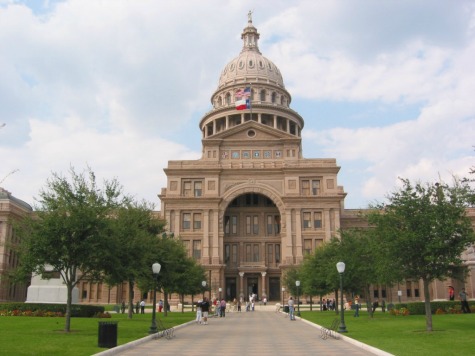Most Texans suspect their state government spends too much. They’re right. However, they typically lack information to confirm this belief because of a complex budget process and budget gimmicks that mask actual levels of spending. Ordinary Texans who pay the taxes deserve a transparent and comprehensible state budget. Unfortunately, they don’t get it from the opaque and difficult-to-grasp processes currently in place.
The Texas Public Policy Foundation (TPPF) gives Texans and taxpayers an easy-to-understand analysis with our recent report “The Real Texas Budget.” It isn’t what some legislators want Texans to know — and that’s exactly why we should know it.
But how do we make sense of Texas state budgets? For starters, you need a measurement that compares the 24-month biennial periods used in Texas state budgeting against each other. Due to variations in the way money is spent and data availability, multiple metrics might be used. We might, for instance, compare appropriations to appropriations or spending to spending.
There’s an important point here, in that appropriations and spending are not the same thing.The former is what a Legislature approves to be spent, and the latter is how much taxpayer money is actually spent. A credible comparison of an adopted budget alone — that is, appropriations — against actual spending from the previous cycle is not made, because the state almost always spends more during a two-year budget cycle than the appropriated amount.
Advocates of more spending like to compare different numbers over differing time spans to make their growth rates look artificially smaller.
What are the metrics that are useful to taxpayers in comparing 24-month periods? There are two big ones we set forth in “The Real Texas Budget.”
The first is session vs. session: measuring the appropriations from one legislative session to the next. TPPF employed this method in May and June 2013 to expose the 83rd Legislature’s heavy bias toward spending. That Legislature’s problems actually started with its predecessor, 2011’s 82nd Legislature, which by delaying education payments and underfunding Medicaid, gave the impression that legislators spent conservatively. In fact, they merely pushed spending into the 2013 session. We sounded the alarm on this back in 2011, writing in the Austin American-Statesman that the 82nd Legislature’s “budget writers had to rely heavily on gimmicks and one-time fixes.” We also noted then that legislators passed up key opportunities to make state budgeting more transparent and understandable to the ordinary Texan.
In 2013’s 83rd Legislature, legislators passed supplemental bills to backfill spending into the previous budget period, and undo the accounting gimmicks of 2011.
As we published last June and republished this week, the appropriations approved by the 83rd Legislature in 2013, including the backfill money, were significantly higher than the appropriations approved back in 2011; 24 percent higher in state general revenue and almost 26 percent higher in all funds, using the Legislative Budget Board’s (LBB) latest numbers.
That’s a tremendous increase by any standard.
The second metric taxpayers may find useful is comparing spending on a biennium vs. biennium basis. This is the method legislators generally use to evaluate the growth of state budgets — not least because it often yields smaller numbers that may be less shocking to taxpayers. TPPF’s “Real Texas Budget” report includes this metric. Our report shows all-funds spending will likely increase by 9 percent during the current two-year period — not the 5.1 percent figure published by LBB just before the March primaries.
There’s a reason for the discrepancy, and it brings us to our final principle for honest assessment of state budgets: make sure to measure the same things.
For example, the LBB did not measure spending to spending. Instead, it measured spending to appropriation. In our report, we estimate that there will be at least an additional $1.6 billion in spending this biennium to pay for increased Medicaid costs. Even with this money added in, the LBB’s numbers wouldn’t measure spending to spending because the Legislature made $6.1 billion of “patient income” spending this biennium simply disappear from the budget.
Appropriately accounting for this and other budget gimmicks is essential to accurate examination of state spending.
Here’s the bottom line for Texas taxpayers. In 2013, the Texas Legislature spent almost every penny it could while providing less than half of the ongoing tax relief Governor Rick Perry sought. Taxpayers deserve to know how much of their money is being spent, and that’s what TPPF’s “Real Texas Budget” report provides.
Our report confirms our statements last year about the excessive hike in appropriations from 2011 to 2013. It also debunks the government’s official budget figures that give taxpayers a false impression of the increase in biennial spending.
The “Real Texas Budget” report provides truth in budgeting that Texans deserve. There are those in the corridors of power and the Austin establishment who think you don’t deserve the truth, and attack those who speak it. And that’s exactly why we do.
Arlene Wohlgemuth is the Executive Director of the Texas Public Policy Foundation. She served on the Texas House Appropriations subcommittee overseeing healthcare spending in 2003. Talmadge Heflin is the Director of the Center for Fiscal Policy at the Texas Public Policy Foundation, and served on the Texas House Appropriations Committee for twelve years, including as its chairman in 2003. Together, they have a collective 32 years of experience, covering 11 state budgets, as State Representatives in the Texas Legislature.
Editor’s Note: The issue of how to properly calculate state expenditures has been hotly contested in Texas. A counterpoint to the below Op-ed can be found here.

COMMENTS
Please let us know if you're having issues with commenting.